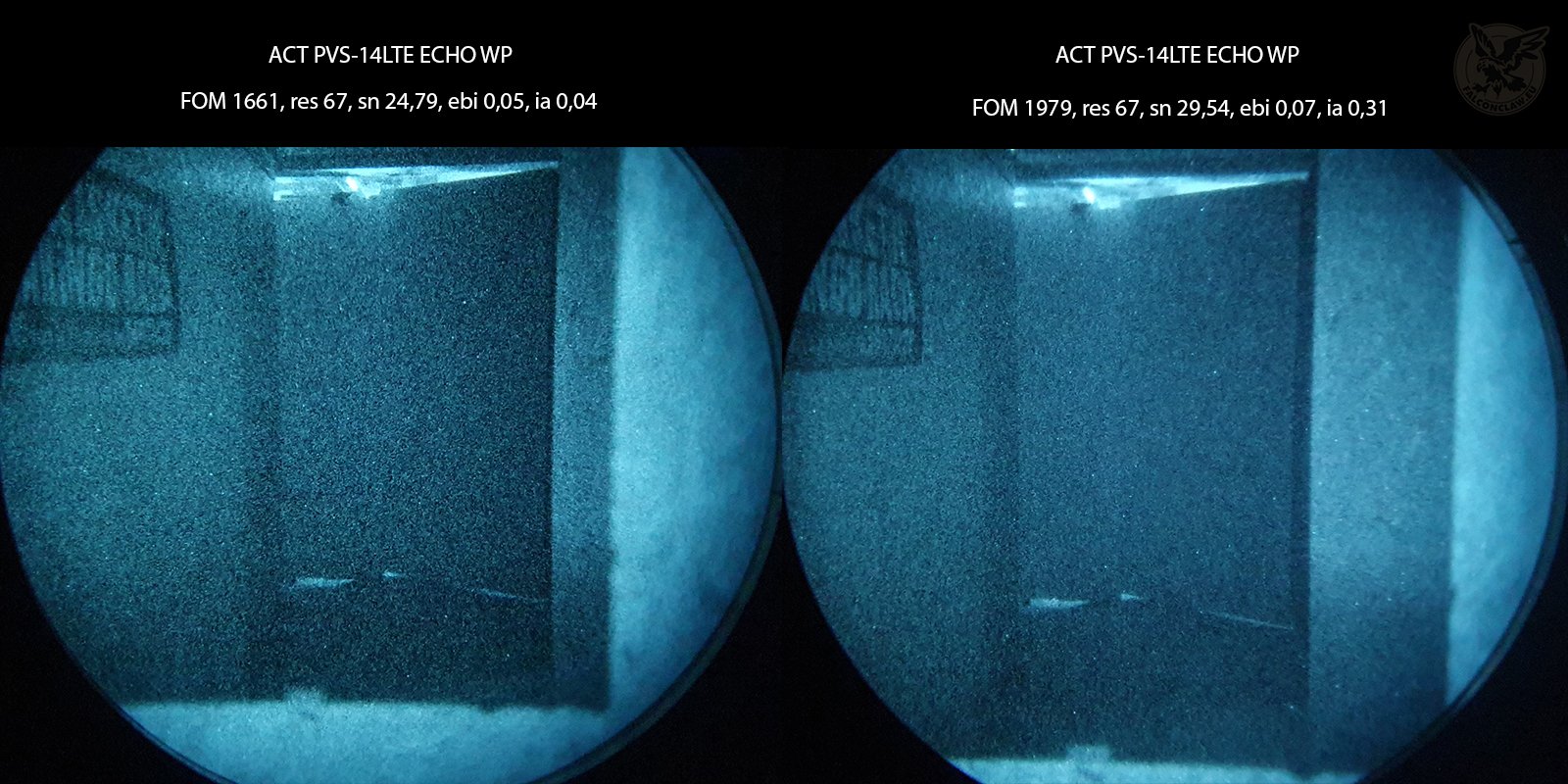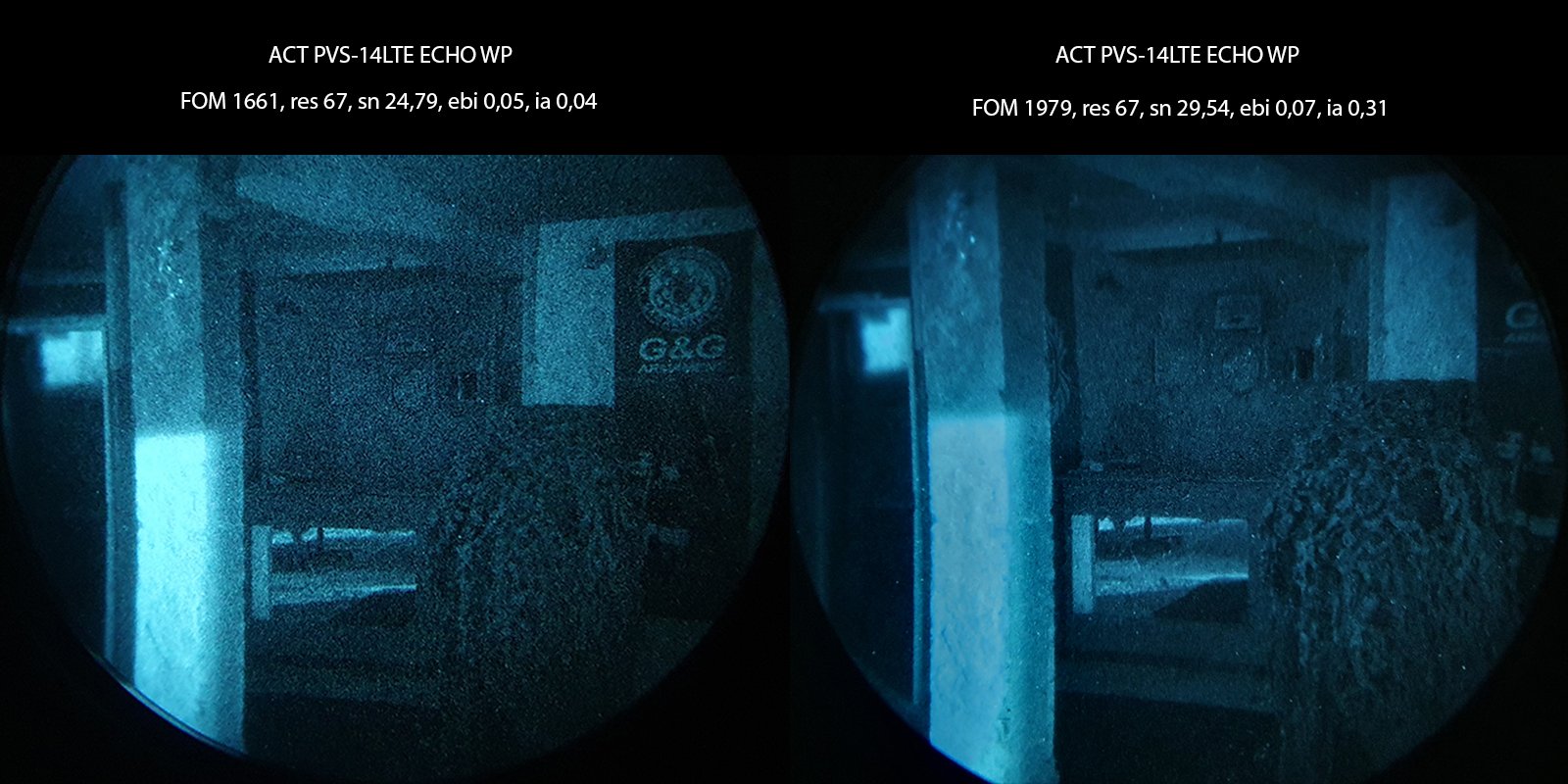Until now, in our comparison blogs we have compared ECHO to a GEN3 and other GEN2s. You can read all about it here.
However, we have never compared ECHO vs ECHO to answer a question “how big is the difference between FOM 1600 and FOM 1900?“. Now, we will try to cover that question with examples.
Specification of Test Units
Let us start by comparing specification sheets of the selected test units. As you can see in table below one unit is with FOM 1661 and another is FOM 1979.
A000743
| Spots score* | 8/10 |
| FOM | 1661 |
| Resolution | 67 |
| SN | 24,79 |
| Gain | 10022 |
| EBI | 0,05 |
| Image alignment | 0,04 |
A000745
| Spots score* | 7/10 |
| FOM | 1979 |
| Resolution | 67 |
| SN | 29,54 |
| Gain | 10831 |
| EBI | 0,07 |
| Image alignment | 0,31 |
Let´s talk about FOM
Official definition – FOM or the Figure of Merit, is a number calculated by multiplying the signal-to-noise ratio (SNR) by the resolution of a night vision image intensifier. FOM number allows quickly estimate general performance level of the specific night vision image intensifier, and consequently the night vision device built around it.
Basically:
FOM = SNR x Resolution.
How much does FOM actually affect performance?
Since resolution for ECHO tubes is pretty much the same across different devices (usually around 65-68), then the main difference in FOM comes for the Signal‐to‐Noise Ratio.
What is Signal‐to‐Noise Ratio (SNR)?
Sigal-to-noise Ratio definition by Phtonis:
Hence, the higher is the figure of SNR, the less noise / more signal you get in low light environments.
Let’s put that to test!
Below you can see pictures taken with test-devices in different low-light environments. So you can judge results yourself.
As you see we must agree that there is slightly more noise on the left pictures where device has lower SNR.
On this picture above we can already notice more significant difference in image quality in low light conditions. In the picture on the right side you can almost see different objects on the background, but on the left side it’s more blurry. But let’s see one more shot …
What has happened here? Why lower FOM unit has more clear picture? It almost seems that unit with higher FOM is unfocused. The answer is that the unit on the right has higher image allignment. The lower the allignment, the more focus you can get from your device.
A Comparison Video of Test Devices (FOM 1661 vs FOM 1979)
Conclusion
Based on the video and the pictures above, we can all agree that higher FOM unit performs slightly better in low light environments. But, the difference is not big, even when comparing devises with such different FOM scale. To be hones, unless you compare units side-by-side, you would probably not even notice the difference. The difference in image quality is not as dramatic as comparing standard GEN2 to ECHO.
In addition, we have observed so far that the higher FOM ECHO units are usually a bit more spotty or have some other non-desirable attribute higher (EBI, Image Alignment). Why? Because if the unit goes above FOM 1800+, then firstly this unit is considered to be 4G. If during analysis some the attribute does not meet the 4G requirements, then it is classified as ECHO device.
In our case with the test-device with FOM 1979 – the image alignment is a bit too high for the unit to be considered for 4G. So, it was classified as ECHO instead.







